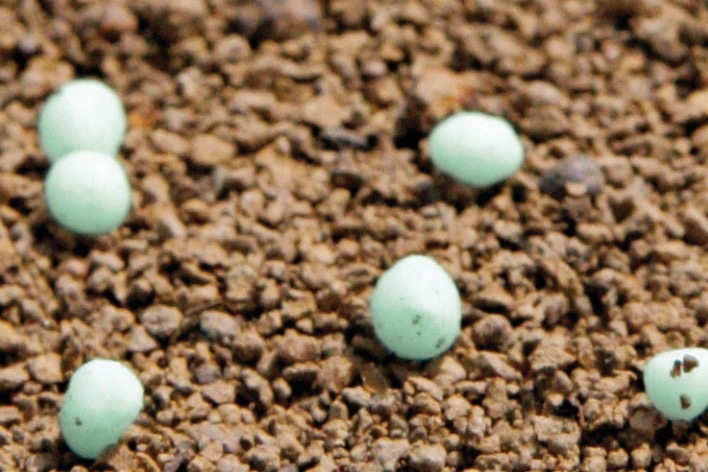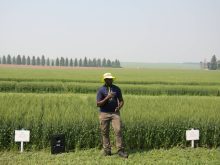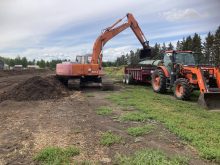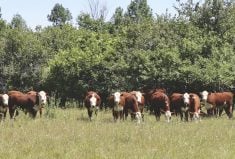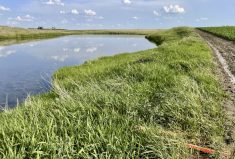The Canola Council of Canada says ESN has been scratched from the list of incentives being offered to reduce nitrous oxide emissions from fertilizer in the federal government’s On-Farm Climate Action Fund.
First put forward in the 2021 budget and expanded in the 2022 budget, the fund’s aim is to help farmers implement immediate on-farm beneficial management practices that store carbon and reduce greenhouse gases in the areas of nitrogen management, cover cropping and rotational grazing.
Read Also

Moo translator and methane measures: There’s an app for that
Dalhousie University researchers use artificial intelligence to create new dairy farm apps that analyze cattle sounds and measure methane.
ESN (Environmentally Smart Nitrogen) is the trade name of an enhanced efficiency fertilizer. It is part of a smaller subcategory of products known as controlled-release fertilizers in which urea is either bound to molecules that degrade slowly or enclosed within polymer coatings to allow the urea to diffuse.
So far, AAFC’s direction is specific to products containing polymer-coated urea. Of these, ESN is the primary product for sale in Western Canada.
“We were informed that ESN fertilizer products did not qualify for the enhanced efficiency fertilizer [incentive],” said canola council vice-president Curtis Rempel.
The organization disputes the government’s rationale for removing ESN from the list of qualifying products and is making its case using data from independent researchers and universities as well as from Agriculture and Agri-Food Canada.
“Our position is that ESN does reduce nitrous oxide emissions during our short-season, dryland prairie conditions,” he said.
The canola council’s position aligns with research done by the University of Manitoba’s Mario Tenuta. The soil scientist has done 16 experiments with ESN that saw an average 23 per cent reduction in nitrous oxide. However, studies from AAFC out of Ontario and Quebec show little to no nitrous oxide reduction.
Rempel says the council doesn’t dispute that data, but he’s hoping the department moves away from a blanket approach and toward one that takes regional differences into account.
While ESN is marketed as a yield-enhancing product, it is designed to protect nitrogen from being lost to leaching, which isn’t usually a problem on the Prairies. Research plot testing shows nitrous oxide reduction but little yield benefit.
“All the yield increase that we see in research plots is minor. In fact, it’s infrequent that we see yield increases so it’s been a tough sell,” said John Heard, soil fertility specialist with Manitoba Agriculture.
With an incentive that covers 85 per cent of the additional cost, there was hope it would be a good opportunity to test drive the product on farms.
Despite being at odds with regarding ESN, Rempel says the program generally has merit.
“I’m impressed with AAFC for looking at mitigation measures and providing dollars directly to growers to start adopting best management practices that have some inherent risk to them,” he said.
“Research obviously starts with good small plot work, but at some point in time, you’ve got to scale it up,” he said. “This is a way to do it.”

